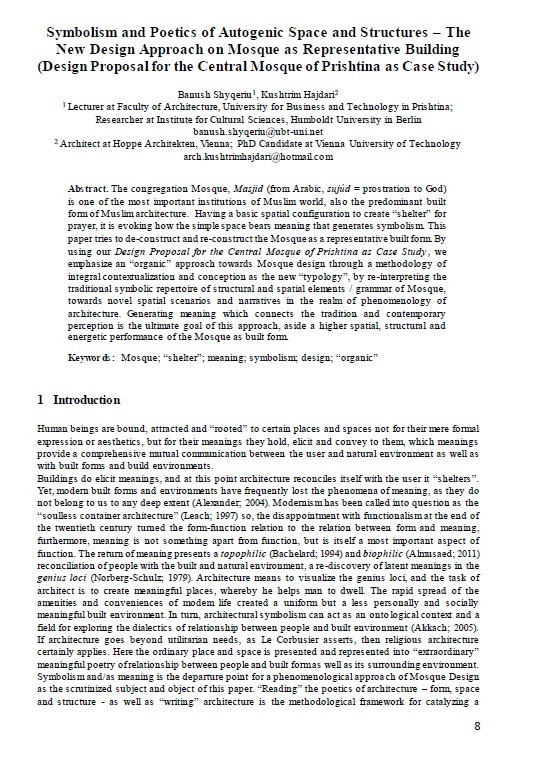
The congregation Mosque, Masjid (from Arabic, sujúd = prostration to God) is one of the most important institutions of Muslim world, also the predominant built form of Muslim architecture. Having a basic spatial configuration to create “shelter” for prayer, it is evoking how the simple space bears meaning that generates symbolism. This paper tries to de-construct and re-construct the Mosque as a representative built form. By using our Design Proposal for the Central Mosque of Prishtina as Case Study, we emphasize an “organic” approach towards Mosque design through a methodology of integral contextualization and conception as the new “typology”, by re-interpreting the traditional symbolic repertoire of structural and spatial elements / grammar of Mosque, towards novel spatial scenarios and narratives in the realm of phenomenology of architecture. Generating meaning which connects the tradition and contemporary perception is the ultimate goal of this approach, aside a higher spatial, structural and energetic performance of the Mosque as built form.
I agree to the terms outlined below:
You agree to upload and assign Mosqpedia Database the rights to use the content worldwide and in perpetuity across all current and future media platforms. Mosqpedia Database may edit, copy, adapt and translate your contribution.
The content will be distributed under the Creative Commons Attribution-Deed – Attribution-NonCommercial-NoDerivatives 4.0 International – Creative Commons
All data will be stored in line with data protection regulations.